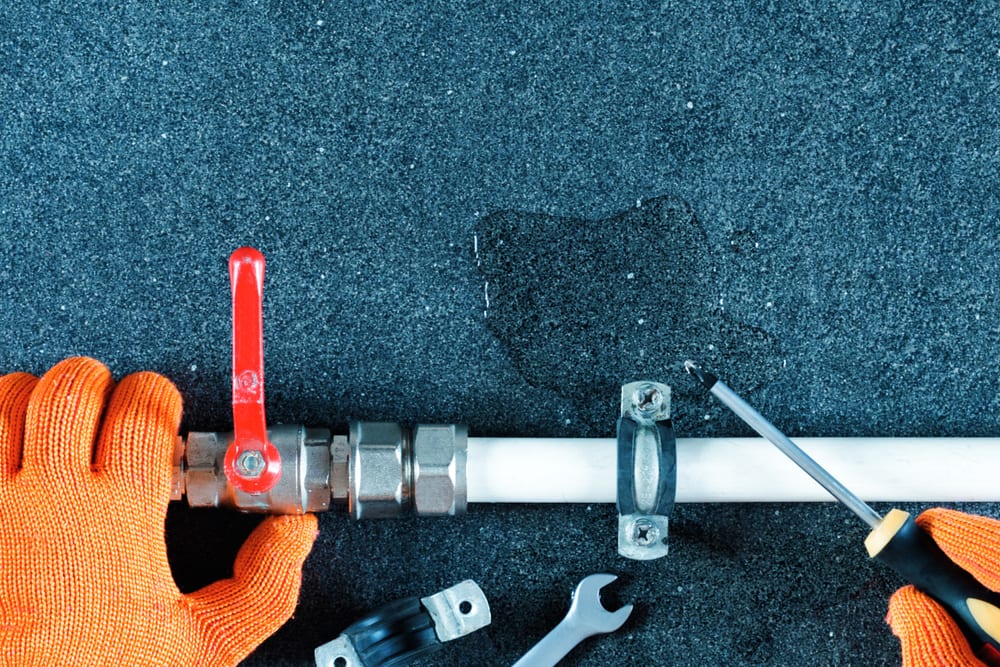How to Check If Your Home Has a Hidden Leakage
How to Check If Your Home Has a Hidden Leakage
Blog Article
The content following next in relation to Top leak detection hacks is seriously informative. Don't miss it.

Early detection of leaking water lines can alleviate a prospective disaster. Some small water leakages may not be noticeable.
1. Analyze the Water Meter
Examining it is a guaranteed method that aids you find leaks. If it moves, that shows a fast-moving leakage. This indicates you may have a slow leakage that might even be below ground.
2. Inspect Water Usage
Analyze your water costs as well as track your water consumption. As the one paying it, you should see if there are any type of inconsistencies. If you find sudden changes, in spite of your intake coinciding, it means that you have leaks in your plumbing system. Bear in mind, your water expense should drop under the same array on a monthly basis. An unexpected spike in your expense indicates a fast-moving leakage.
A steady increase every month, also with the same habits, reveals you have a slow leakage that's also slowly escalating. Call a plumber to completely examine your residential or commercial property, specifically if you really feel a cozy area on your floor with piping beneath.
3. Do a Food Coloring Test
30% comes from commodes when it comes to water consumption. Examination to see if they are running correctly. Decrease flecks of food color in the storage tank and also wait 10 minutes. There's a leakage between the container and bowl if the shade in some way infiltrates your dish during that time without flushing.
4. Asses Outside Lines
Don't fail to remember to inspect your outdoor water lines as well. Ought to water leak out of the connection, you have a loosened rubber gasket. One small leak can squander heaps of water and also surge your water bill.
5. Analyze the situation as well as inspect
House owners must make it a routine to examine under the sink counters and even inside closets for any kind of bad odor or mold and mildew development. These two red flags suggest a leakage so punctual attention is called for. Doing routine examinations, also bi-annually, can conserve you from a major trouble.
A lot more importantly, if you recognize your house is already old, keep a watchful eye on your heaters, hoses, pipes and so on. Check for discolorations as well as damaging as many home appliances and also pipes have a life expectancy. They will additionally normally degrade due to wear and tear. Do not wait for it to intensify if you suspect leaking water lines in your plumbing system. Call a professional plumber as soon as possible so you do not end up with an awful mess in your house.
Early detection of leaking water lines can minimize a prospective catastrophe. Some little water leakages might not be visible. Checking it is a proven way that aids you uncover leaks. One tiny leakage can waste lots of water as well as increase your water bill.
If you presume dripping water lines in your plumbing system, do not wait for it to rise.
WARNING SIGNS OF WATER LEAKAGE BEHIND THE WALL
PERSISTENT MUSTY ODORS
As water slowly drips from a leaky pipe inside the wall, flooring and sheetrock stay damp and develop an odor similar to wet cardboard. It generates a musty smell that can help you find hidden leaks.
MOLD IN UNUSUAL AREAS
Mold usually grows in wet areas like kitchens, baths and laundry rooms. If you spot the stuff on walls or baseboards in other rooms of the house, it’s a good indicator of undetected water leaks.
STAINS THAT GROW
When mold thrives around a leaky pipe, it sometimes takes hold on the inside surface of the affected wall. A growing stain on otherwise clean sheetrock is often your sign of a hidden plumbing problem.
PEELING OR BUBBLING WALLPAPER / PAINT
This clue is easy to miss in rooms that don’t get much use. When you see wallpaper separating along seams or paint bubbling or flaking off the wall, blame sheetrock that stays wet because of an undetected leak.
BUCKLED CEILINGS AND STAINED FLOORS
If ceilings or floors in bathrooms, kitchens or laundry areas develop structural problems, don’t rule out constant damp inside the walls. Wet sheetrock can affect adjacent framing, flooring and ceilings.
https://www.servicemasterbyzaba.com/blog/how-to-detect-water-leakage-in-walls/

I stumbled upon that article on Detecting hidden plumbing leaks when doing a lookup on the search engines. Sharing is good. Helping people is fun. Thanks a lot for your time. Come back soon.
Report this page